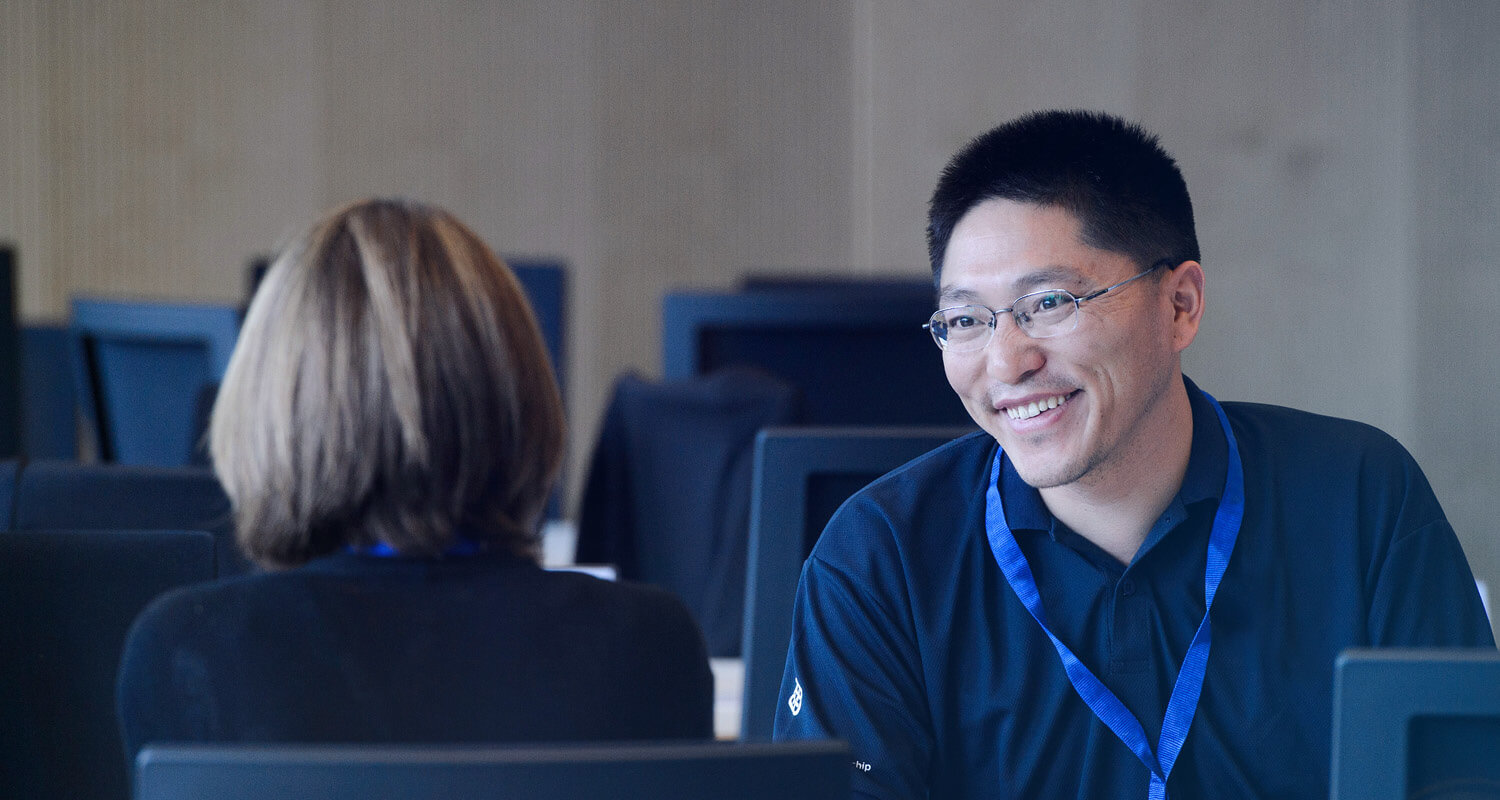
Beyond algorithms: the impact of AI and ML on organizations
Technology is not the same as a product
An algorithm or neural network does not equal a product, no matter how sophisticated it is. For example, Zebra Medical has developed sophisticated technology that allows it to recognize bone fractures in radiology scans and suspicious lesions in mammography. They perfected this technology by scanning tens of millions of images so that machines could learn to correctly identify fractures and lesions. In doing so, they developed more than 100 algorithms. Most radiologists and doctors, however, will not be able to use them—the algorithms first need to be turned into products. For an algorithm to become a product it needs to seamlessly fit into the work environment of the radiologist or doctor. This means, at a minimum, that an application needs to be developed that functions on the equipment of any given medical center. The application needs to be easy to use and generate output that is meaningful to the user. In terms of Zebra Medical, this meant that the application generated output that told the radiologist the location and type of fracture/lesion.A product is not the same as value
While Zebra Medical indeed created an application to handle identification in the user’s environment, that in itself does not generate value. They did find, however, at least two ways to create value. The first one was efficiency. The application they developed can review many more scans and mammograms than any radiologist or doctor, with greater speed. So, the first great value the technology brings is efficiency. The innovation Zebra Medical developed is an algorithm to rank order the scans and mammograms by level of urgency. The development of this algorithm needed extensive inputs from radiologists and doctors as to what constitutes a normal, an urgent and a very urgent issue. Once that work was accomplished, not only was Zebra Medical able to provide scans and mammograms, it was able to rank order them so that radiologists and doctors could attend to the most urgent cases first. This is where the product added great effectiveness to the workflow as well as to the lives of the patients.The world needs leaders who bring innovation & change
Discover the latest insights from our world-class faculty, and gain practical knowledge and new skills to drive innovation. Combine ideas development with action learning such as rapid prototyping!
Value depends on where one sits
While the above technology may sound extraordinary to some, it does not necessarily do so to those who are radiologists, doctors, hospital administrators, insurance companies and regulators. Radiologists and doctors worry about the quality and reliability of fracture and lesion identification. They are even more concerned about Type 1 and Type 2 errors: A Type 1 error is when the patient is identified as injured or sick when, in fact, he/she is not; a Type 2 error is when the patient is identified as healthy when, in fact, he/she is not. Radiologists and doctors may further worry that they might be replaced by machines. While we do not preclude this as a future possibility, we do need to distinguish between identification and diagnosis. While hospital administrators may have mixed feelings about the new products, they will likely be excited about the potential efficiency and quality improvements. On the other hand, they may also worry about Type 1 and 2 errors—not just from a quality perspective, but also from a liability perspective. Insurance companies may be excited about potentially lower health care costs due to efficiency and more preventative interventions thanks to early detection. Regulators will want to understand which variables the algorithms actually use to arrive at their identification labels. The issue with learning through neural networks is that even the programmers often do not know how their programs arrive at their conclusions. And a further question is who now is responsible for the diagnosis and treatment. Is it the hospital, the doctor, the radiologist, the algorithm company, the programmer or the algorithm itself? And that brings us to the last aspect of the impact of AI/ML on organizations.Products that replace versus products that enhance human performance
For now, we seem quite far away from machines conducting diagnosis, designing medical treatment, prescribing medical interventions and following up with patient care. All these steps, for now, rest firmly with medical doctors. That said, fracture and lesion identification can already significantly enhance human performance in terms of efficiency in scanning, workflow organization and the timely identification of urgent cases. When AI/ML companies truly understand the challenges of their potential customers, they can create products that add real value in terms of efficiency and/or effectiveness in the that customer’s environment. As one can see above, creating such value is more difficult than it sounds, especially in the medical field, as the needs and concerns of the various stakeholders will vary and sometimes conflict. That said, while human replacement is far into the future, when done right, AI/ML can greatly enhance human performance. This article is part of a series on digital innovation in Israel.The world needs leaders who bring innovation & change
Discover the latest insights from our world-class faculty, and gain practical knowledge and new skills to drive innovation. Combine ideas development with action learning such as rapid prototyping!
Research Information & Knowledge Hub for additional information on IMD publications
Executive Programs
Upcoming Events
Moving the cogs in a country’s productivity system requires the right kind of talent. Let’s consider them the oil. The usefulness of this oil depends on all manner of inputs, such as the quality of the education system and the attractiveness of th...

Rohit Jawa, CEO of Hindustan Unilever, shares how HUL is leveraging digital, talent, and innovation to serve India’s growing middle class.

Knowledge scientists may be the key to unlocking AI's full value, offering transparency and structure that data scientists alone can't provide, says IMD’s Tomoko Yokoi.
The emergence of AI agents and agentic systems represents a significant milestone in artificial intelligence, enabling autonomous systems to operate, learn, and collaborate in complex environments with minimal human intervention. This paper, drawi...

Firing on all engines, Unilever’s ‘crown jewel’ is scaling digital, talent, and strategy to lead growth in India’s fast-approaching $5tn economy.
Absa faced a critical rise in cyberattacks, and with the cybersecurity talent gap widening, the company urgently needed a long-term solution. To address this, former CISO Sandro Bucchianeri launched the Cybersecurity Academy in 2019, an initiative...
In today's workplace, the proliferation of digital technologies has transformed work tasks but also led to technostress. This stress, associated with technology use, negatively impacts employees' behavioral outcomes and performance. Despite these ...
Set in 2024, the case describes the trajectory of Nike's success and how it had recently lost its way. The company was experiencing its worst slump in more than 10 years. Since 2020, CEO Donahoe oversaw a significant shift away from wholesale, wit...

The IMD World Competitiveness Ranking (WCR) is a renowned tool for assessing the competitiveness of economies worldwide. This year, IMD’s World Competitiveness Center (WCC) has expanded its scope to include Kenya, Namibia, and Oman. This year's ra...

Natalia Wallenberg of Ahold Delhaize describes how one of the largest retailers in Europe is tackling the upskilling dilemma.
IMD World Competitiveness Center Report, September 2025
Research Information & Knowledge Hub for additional information on IMD publications
Research Information & Knowledge Hub for additional information on IMD publications
in I by IMD
Research Information & Knowledge Hub for additional information on IMD publications
in Journal of Computer Information Systems August 2025, vol. 65, no. 4, pp. 489-517, https://doi.org/10.1080/08874417.2025.2483832
Research Information & Knowledge Hub for additional information on IMD publications
Research Information & Knowledge Hub for additional information on IMD publications
Case reference: IMD-7-2642 ©2025
Research Information & Knowledge Hub for additional information on IMD publications
in Technological Forecasting and Social Change July 2025, vol. 2016, 124143, https://doi.org/10.1016/j.techfore.2025.124143
Research Information & Knowledge Hub for additional information on IMD publications
Research Information & Knowledge Hub for additional information on IMD publications
Published by International Institute for Management Development ©2025
Research Information & Knowledge Hub for additional information on IMD publications
in I by IMD
Research Information & Knowledge Hub for additional information on IMD publications



